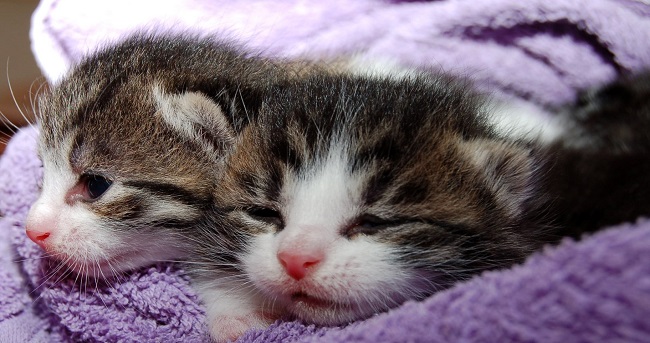Living with a cat is a wonderful experience, but to be a responsible owner, you also need to be aware of the potential signs and symptoms of ill health. Like any animal, cats are also susceptible to a number of illnesses and diseases; luckily, many of them are treatable if they are caught early enough.
Read on to learn more about some of the most common cat diseases and how you can treat them.
1. Cancer
Depending on the type of cat that you co-habit with, they can be at risk for different types of cancers. Lymphosarcoma, also known as lymphoma, is one of the most commons forms of cat cancer and accounts for nearly 30% of all diagnosed tumors. Signs to look out for are lumps, swelling, weight loss, diarrhea/vomiting, a change in behavior, or more. See your vet if your cat presents with any of the above symptoms. While unpleasant, they can often be treated with chemotherapy, surgery, radiation, or other therapies.
2. Feline Immunodeficiency Virus (FIV)
Cats who end up with the feline immunodeficiency virus (FIV) may not exhibit any symptoms for several years due to its slow growing nature. However, as the cat’s immune system is suppressed with this condition, they can end up with secondary infections. Signs of FIV include fever, enlarged lymph nodes, anemia, weight loss, inflammation of the gums, mouth or eyes, wounds that don’t heal, and more. There is no antiviral treatment for this condition; however, vets can prescribe anti-inflammatory drugs or medications for secondary illnesses. They can also recommend a health plan.
3. Heartworm
Heartworm is not for the faint-hearted, but it poses a real threat to your cat if left untreated. Spread by mosquitos and caused by foot-long worms that live in the heart, lungs, and blood vessels of pets, heartworm can lead to heart problems, lung disease, and organ damage. To know whether your cat has heartworm, look out for coughing, breathing difficulties, loss of appetite, lethargy, and sporadic vomiting. A visit to see a vet at veterinarianfriscotx.com can also help with diagnosis and treatment. While there is no cure, cats often heal themselves, and medications can be given to control coughing and vomiting.
4. Fleas
Fleas are well known in the world of pets, and they can be troublesome for your cat should they catch them. If you spot your cat scratching endlessly or chewing their skin, they may have a bout of fleas. It is crucial to consult with a veterinarian before using any flea control products to ensure how to get rid of fleas on cats explained by them. One of the surest ways to check is to inspect their skin and look for any small insects that jump or move. Treating fleas is fairly easy, as many supermarkets or pet shops carry flea treatments. You can also speed up the process by brushing your cat’s hair with a flea comb and then rinsing it in water and dish detergent to trap the parasites.
5. Rabies
Rabies is a fatal disease that affects the brain and spinal cord and is usually transmitted from the bite or scratch of another animal. While signs can take months to appear, it’s important to be aware of whether your cat is showing the following signs:
• Changes in behavior such as aggression or restlessness
• Increased vocalization
• Weakness
• Loss of appetite
• Paralysis
It’s never easy to think about your cat getting ill, but the reality is that they can also develop diseases. By being aware of the key signs and symptoms early enough, you can prevent the illness from getting worse.











